Over the years, I have been asked dozens of times what coins a new collector should consider buying. Often, it is a bullion buyer who has discovered numismatics and is ready to get started. My advice is usually tailored to the individual’s collecting budget. I also suggest several numismatic books to pique their interest and to educate them about the unique history and the beauty rare coins offer. My coffee table book 100 Greatest United States Coins is a great introduction for someone new to the hobby.
The Ultimate Starter Coin?
If you can afford it, an intriguing way to start your numismatic journey is by purchasing an MCMVII (1907) High Relief Double Eagle. These coins are a masterpiece of American gold coinage and universally considered one of the most beautiful coins ever produced by the United States Mint. The coins also have an interesting history and are connected to one of the most popular presidents of all time.
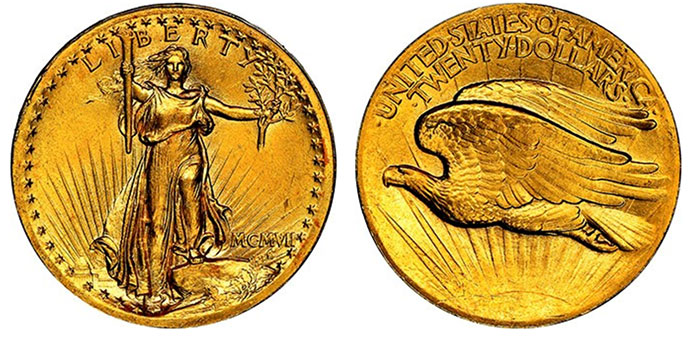
President Theodore Roosevelt considered the coin designs, at the time, to be unattractive and without artistic merit. He personally requested that Augustus Saint-Gaudens (a prominent American sculptor of the era) design new $10 Eagles and $20 Double Eagles. After Saint-Gaudens’s death in 1907, US Mint Engraver Charles Barber was ordered to begin striking the High Relief Double Eagles. President Roosevelt even exclaimed, “Begin the new issue even if it takes you all day to strike one piece.”
Although the high-relief design was fabulous from an artistic standpoint, it was impractical for commercial uses. Bankers complained that the coins would not stack properly, and the high-relief design required at least three to five blows from the minting press. The Roman numerals were also confusing to the public. Later in 1907, the relief was dramatically lowered, and the Roman numerals were replaced with Arabic numerals.
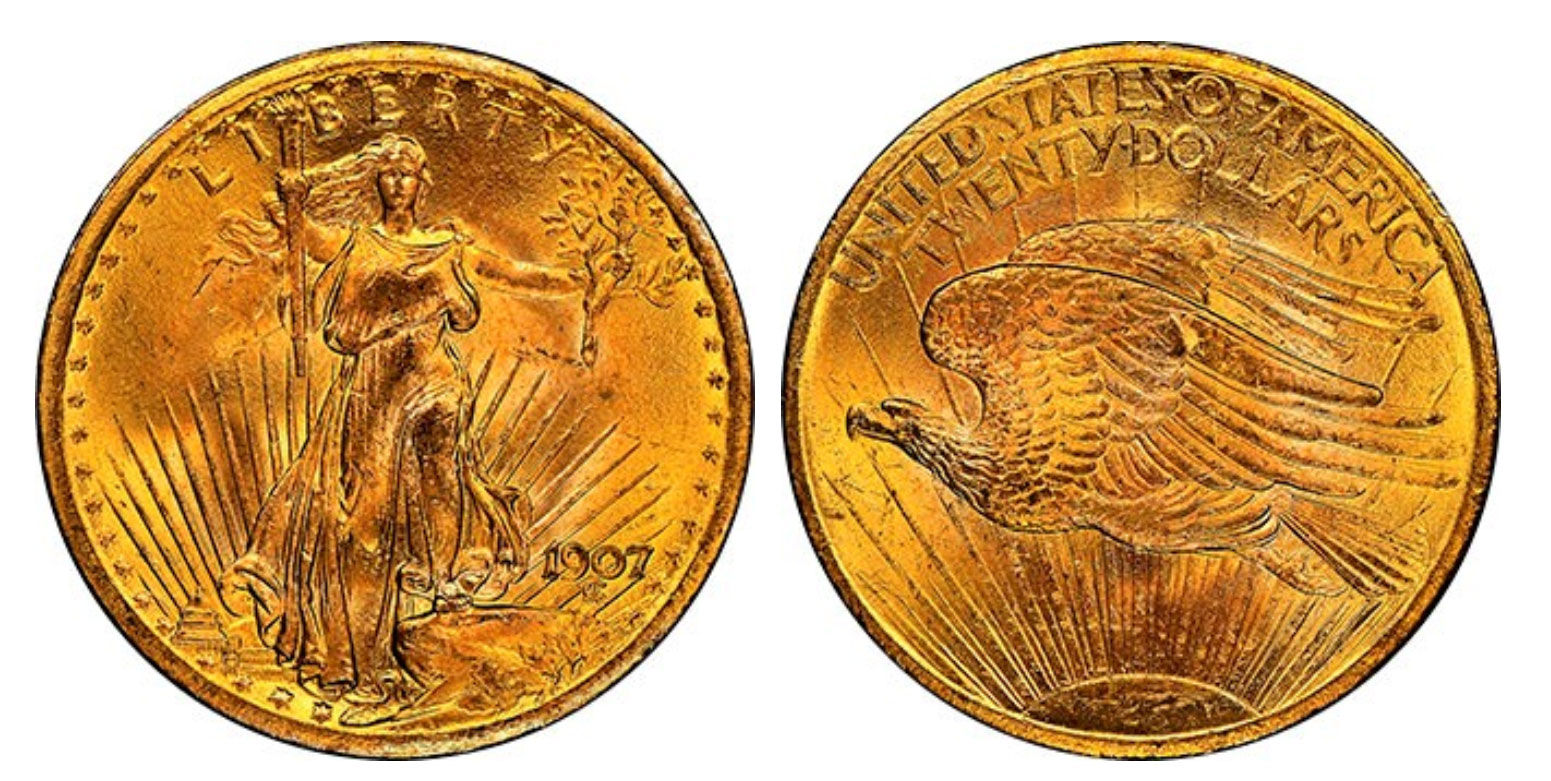
The MCMVII (1907) High Relief Double Eagle is one of the most popular and desirable coins in the US gold series. It is not an extremely rare coin but has for decades been one of the most sought-after US gold coins. The beauty of the sculptural design elevates the issue to the level of fine art. If you can buy only one coin, then the MCMVII (1907) High Relief Double Eagle should top the list.
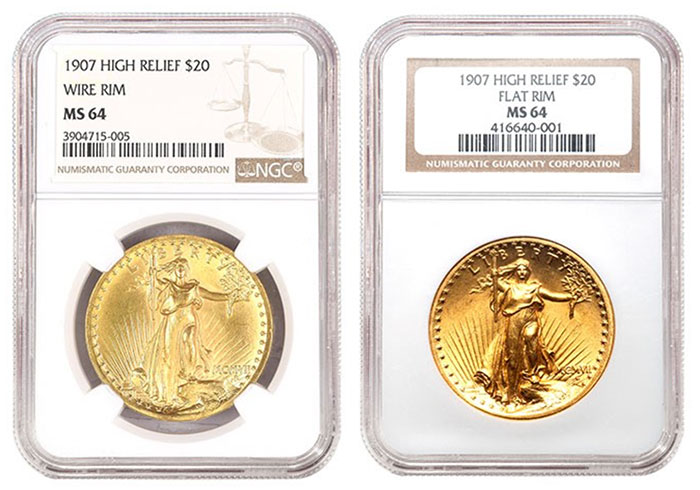
There are two distinct varieties of the MCMVII (1907) High Relief saint — Wire Rim and Flat Rim. These varieties were not created on purpose but were the result of different collars used in the minting process. Loose collars resulted in extra metal being forced between the collar and the dies, resulting in a thin wire rim. On some coins, the wire rim is seen on only one side. The Flat Rim coins are considered to be slightly scarcer, but the Wire Rim and Flat Rim varieties are valued about equally in today’s markets.
The US Mint struck 11,250 MCMVII (1907) High Relief Double Eagles, and it seems that most were saved at the time of issue. The coin is somewhat expensive, but not rare. I have handled at least a few hundred examples over the course of my career and usually have two or three in stock.
Purchasing an MCMVII (1907) High Relief Double Eagle may be based on your budget. Circulated examples are encountered quite often, but many of these have problems such as rim mounting or damage. An attractive, problem-free MCMVII (1907) High Relief can be purchased for under $10,000 in About Uncirculated condition. Damaged coins can sometimes be found for less than $7,000.
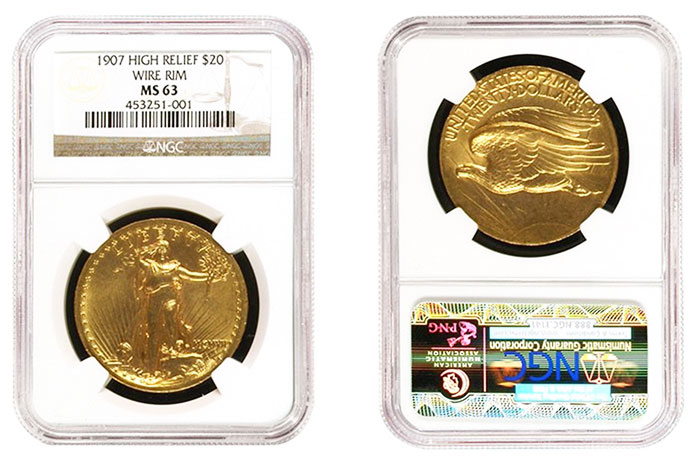
In my opinion, if you are going to buy an MCMVII (1907) High Relief, the best value lies with coins in MS 63 and MS 64. A beautiful NGC MS 63 MCMVII (1907) High Relief Double Eagle can be found for well under $20,000 and MS 64 coins are around $20,000. These coins show up at auction frequently, often with multiple examples being represented in a single auction sale. Exercise patience and find one with superior luster and minimal marks for the grade. Wire edge examples often have rim issues due to the extra metal which is soft and can be nicked easily.
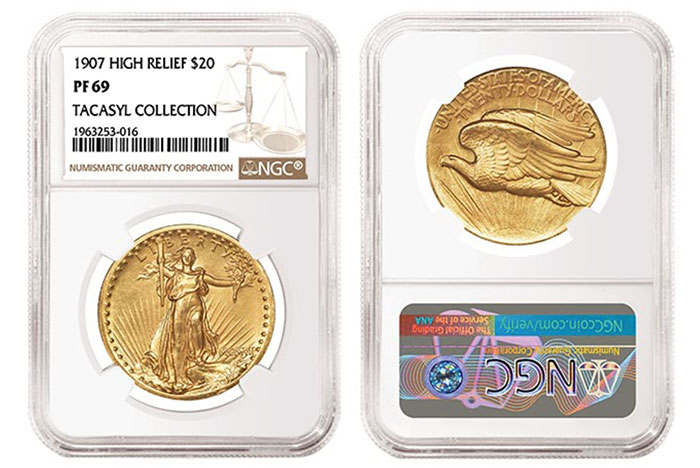
The MCMVII (1907) High Relief is also known in the so-called Proof format. These appear to be special issues with a swirling matte finish, unlike the traditional Matte Proofs, which were struck from 1908 to 1915. At least a hundred are known of this interesting issue. An MCMVII (1907) High Relief graded NGC PF 69 sold for $660,000 in September 2020.
Additional Coins to Collect
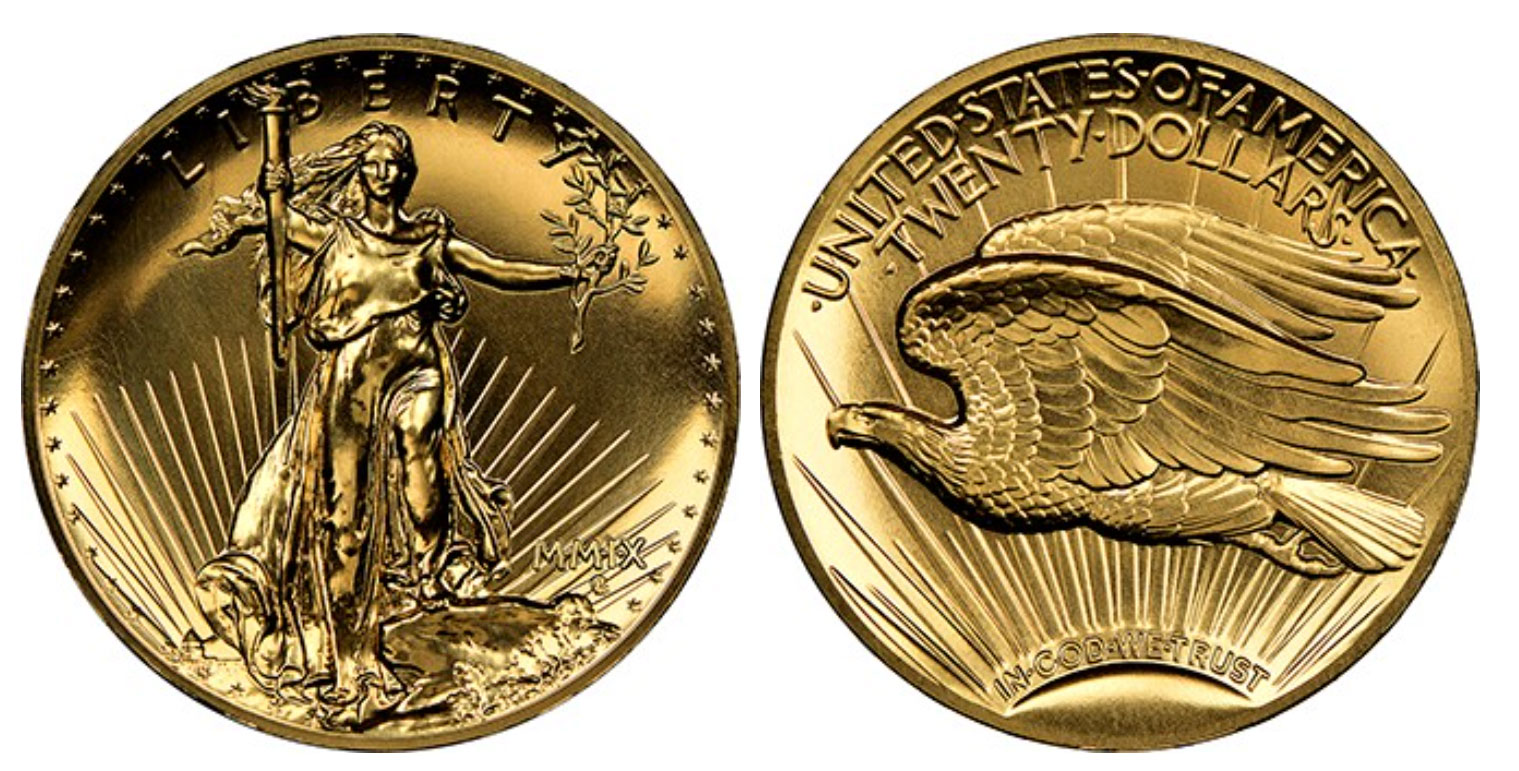
If your budget precludes you from purchasing an MCMVII (1907) High Relief Double Eagle, you should consider the 2009 recreation of the MCMVII (1907) Ultra High Relief Saint-Gaudens Double Eagle Piedfort. The year 1907 saw a great deal of experimentation at the US Mint. President Roosevelt was insistent that sculptor Augustus Saint-Gaudens redesign the US coinage.
One of the experimental issues produced was a Double Eagle of the MCMVII (1907) design struck on a normal weight planchet, but with the diameter of an eagle. The resulting coin was a piedfort, meaning much thicker than normal. This Ultra High Relief Double Eagle was almost double the thickness of a standard Double Eagle and was smaller than the regular High Relief Double Eagle. Only two examples are known, both of which are in the Smithsonian National Numismatic Collection.
It is interesting that a coin that was elusive and mysterious was later mass-produced. Some collectors welcomed the chance to own one, while others lament the reproduction of such an iconic issue. Regardless, the issue gives collectors a chance to own one of the most beautiful coins ever stuck for not more than its bullion price. Examples can be found with little effort in MS 69 or MS 70.
The MCMVII (1907) High Relief Double Eagle is one of my all-time favorite numismatic issues. Not many coins combine history and art so effectively. Regardless of how long you have been collecting coins, you should consider owning an example.
